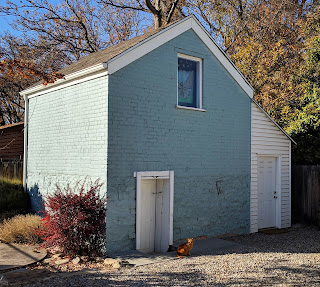 |
First match factory in Utah. Frank Yeager pictured here worked
in the match factory. Courtesy Olive Burt. From UDSH. |
Mr. Frank Yeager (1868-1950) standing in front of the adobe structure that housed the Great Western Match Factory, where he worked as a youth.
The Great Western Match Factory was the second match factory in Utah and was located at 615 South 300 East in downtown Salt Lake City, where the present-day Central City Recreation Center is situated. (The first match factory was a home manufacturing endeavor by Alexander Neibaur in 1851).
The Great Western Match Factory was established about 1875 by Swen W. Anderson (although it wasn't named the Great Western Match Factory until 1881) and was closed around 1910. The adobe building stood until sometime after 1950 at which point it was described as vacant and dilapidated. The match factory burned a few times in its history, the most noteworthy on July 17, 1882, when it was a complete loss. It was soon rebuilt and stocked with new machinery.
The match factory used local Quaking Aspen for the boxes, Red Pine for the match sticks, and Sulphur from Cove Creek for the distinctive red cap tip.
Sources: Utah History Blazer Aug 1996; Deseret News 1883-06-20, SL Democrat 1885-06-19, SL Telegram 1950-12-14


















